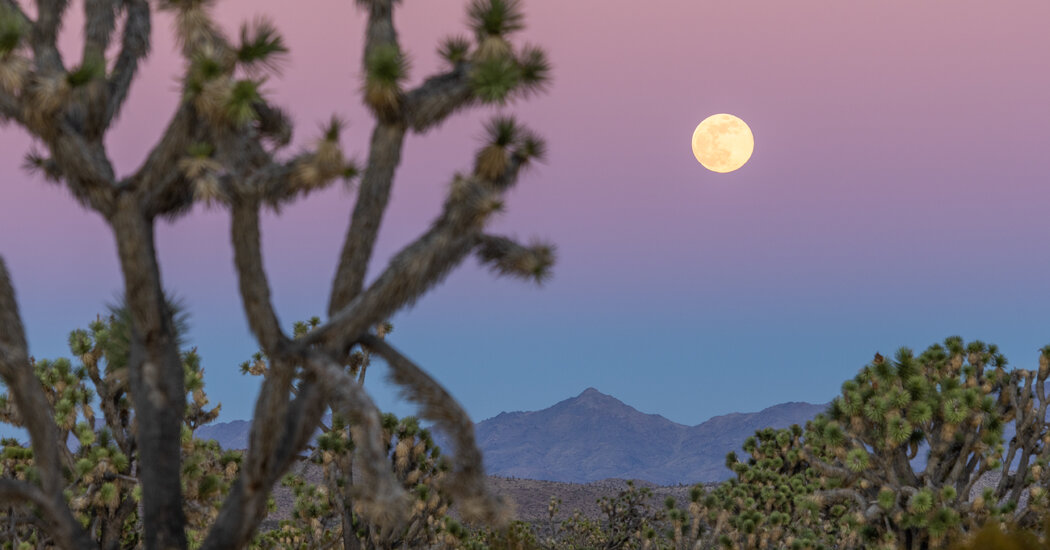‘When I looked at it, I knew who I was’
Earlier in the week, I had driven to Needles, Calif., to visit the Pipa Aha Macav Cultural Center (Pipa Aha Macav is the Fort Mojave term for “people by the river”). Driving south on Highway 95, I passed a sprawling solar project that eventually gave way to open desert. Creosote bushes, still green from the August monsoon, carpeted the valley. In the distance, I could make out the silhouette of the Highland Range, crowned with dark piñon and juniper forests.
Johnny Ray Hemmers, a tribal council member, met me in the center’s cultural classroom, where local youths learn traditional activities like painting, beading and dancing. Mr. Hemmers, 38, is a warm, quick-talking man with twinkling eyes. He spoke openly about his tribe’s long history in the desert and of the significance of Ave Kwa Ame. “As a child, seeing the mountain meant a lot to me,” he said. “When I looked at it, I knew who I was and where I came from.”
Avi Kwa Ame, for the Fort Mojaves, is not a recreational place. Each October, members take part in a 34-mile ceremonial run that begins at the base of the mountain and continues all the way to Needles, ending with a plunge in the icy Colorado River. The event honors traditional “spirit runners” who once ferried messages between tribes, similar to couriers in ancient Greece.
I also spoke to a member of the Moapa Band of Paiutes, a neighboring tribe, who do not count Avi Kwa Ame as their origin site, but still recognize its deep cultural relevance. “Our footprints are all throughout this area,” Shanan Anderson, the tribe’s cultural manager, told me.
The Fort Mojave tribe identifies itself as the mountain’s caretaker, and its members are no strangers to environmental justice. In 1998, they successfully fended off a proposed nuclear dump site in Ward Valley, 20 miles west of Needles, and in 2006 marked a legal victory against Pacific Gas & Electric, whose pipelines threatened to seep toxic chromium-6 into the Colorado River. They are confident that the campaign for Avi Kwa Ame will end in victory, too.
In June, Mr. Hemmers was part of a delegation that met with Deb Haaland, the secretary of the Interior, at the foot of Avi Kwa Ame to explain the site’s significance. Under craggy granite spires, the tribe sang traditional songs that have been passed down over generations. After hearing their stories, Ms. Haaland was visibly moved. “She had tears in her eyes,” Mr. Hemmers…
Click Here to Read the Full Original Article at NYT > Travel…
